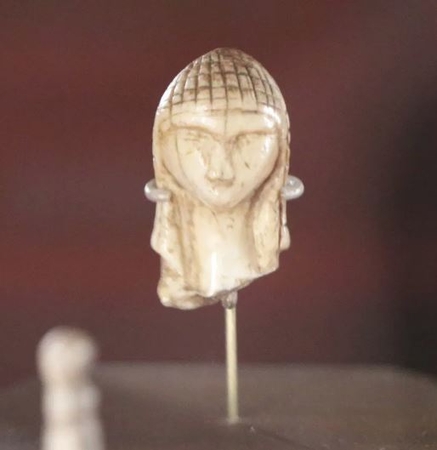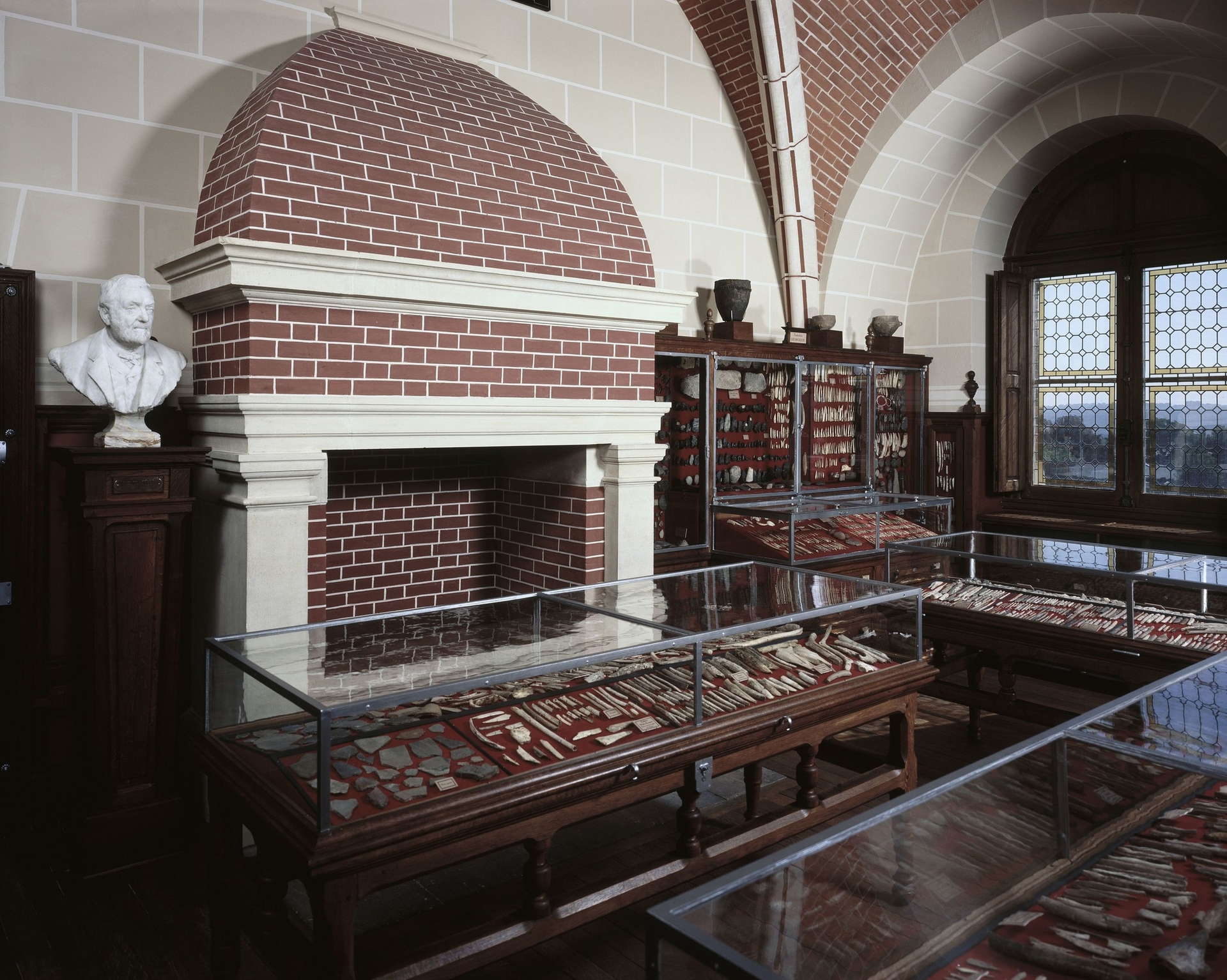Visit the Piette Room

The Piette collection, named after its finder and generous donor, is probably the world’s finest collection of prehistoric art. It is presented in the Piette Room at the Musée d'Archéologie nationale de Saint-Germain-en-Laye.

The Piette Room, worthy heir to the curiosity cabinet tradition, transports visitors to a “museum within the museum". Its display cases present thousands of objects against red fabric, in gilded brass grips with beautifully hand-written labels. The famous “Lady with the Hood" awaits you.
Born in 1827, son of a landowner from the Ardennes, Édouard Piette studied law in Paris before becoming a justice of the peace. After the war of 1870, which undermined his health, he went to the Pyrenees to take the waters. He discovered a region with an incredible wealth of prehistoric sites, caves and dolmens. From 1871 to 1875, he excavated the caves of Gourdan (Haute-Garonne), Lortet (Hautes-Pyrénées) and Espalungue in Arudy (Pyrénées-Atlantiques). From 1887 to 1894, he carried out research into the cave of Mas d’Azil (Ariège). He brought to light the Azilian, the period of the last hunter-gatherers. And then, from 1894 to 1897, he excavated the cave of Le Pape in Brassempouy (Landes), where he discovered the famous Lady with the Hood.
Throughout his scientific career, Édouard Piette informed the archaeological community of his research by publishing multiple articles, notes and accounts. After discovering these sites fabulously rich in bone industry remains and mobiliary art, he dated them more precisely to the Late Palaeolithic by studying the fauna, flint tools and tools in bone and reindeer antler, and above all, art objects. He contributed to the recognition of palaeolithic mobiliary art, and helped develop the first classifications and interpretations. At the end of his life, he worked on his book L’Art pendant l’Âge du Renne, which was only published in 1907, the year after his death.
Although he self-funded his research, Édouard Piette never considered selling his collections, even though they included a number of masterpieces of human achievement. In 1902, he proposed to donate them to the Musée des Antiquités nationales, on five conditions. The first four conditions related to the display of the collections. The fifth stipulated that assistance should be provided to publish works on the collections. Strangely, this fifth condition proved the most difficult to negotiate. After two years of negotiations, the Piette donation was accepted by decree on 9 June 1904. A century later, the Piette collection is still one of the world’s most prestigious collections of prehistoric art.
* The Musée d'Archéologie nationale was originally known as the Musée des Antiquités nationales
In line with the terms under which the collection was donated, the Piette collection is displayed in a room specially set aside for this purpose. Above the fireplace, a plaque commemorates the generosity of Édouard Piette, while close to the entrance, his marble bust watches over the room that bears his name. The museum display of the collection is scientifically classified according to a system developed by the donor. However, the classification and display methods chosen by Édouard Piette were extremely complex and required input from the man himself. However, his age and health prevented him from making the journey to organise the display of his collection. In the end, the spirit – if not the letter – of the donation has been respected.
In the early 20th century, the museography of the Piette Room was identical to the one found in the museum’s other rooms, opened by Napoleon III in 1867. The artefacts are displayed in oak cabinets against red felt backgrounds and held in place by brass grips. The handwritten labels provide information on the sites, periods and types of objects. The artefacts are displayed in large numbers and close together in order to show the wealth and diversity of the collection. The Piette Room contains some seven thousand objects, whereas the present-day Palaeolithic gallery, which is five times bigger, comprises just one thousand. The influence of the cabinet of curiosities was still alive and well in the museums at this time.
In 2004, a century after it first opened, the Piette Room was beginning to show signs of fatigue. It needed to be restored – ,rather than renovated ,– in strict accordance with the terms of the donation. The museum had to strike a compromise between the original museum display, which could not be changed, and the modern demands security and conservation, and the comfort of visitors. The conservation of the room was entrusted to outside companies under the supervision of the head architect of the Monuments historiques, France’s national heritage organisation. The refurbishment of the displays was carried out by the museum’s departments coordinated by the curator of the palaeolithic collections.
After being reserved exclusively, for far too many years, for the use of curators and researchers, prehistorians and archaeologists, the Piette Room is now open to the public. It can be visited by groups of nineteen people on discovery or guided tours as part of the programme of activities organised by the museum. Although the display is surprising to modern eyes, it is also, without doubt, both interesting and beautiful. It takes us back more than a century, when the prehistoric sciences were just emerging, and beyond that, tens of thousands of years, in the company of the famous Grimaldi Venus and the celebrated Lady with the Hood from Brassempouy.